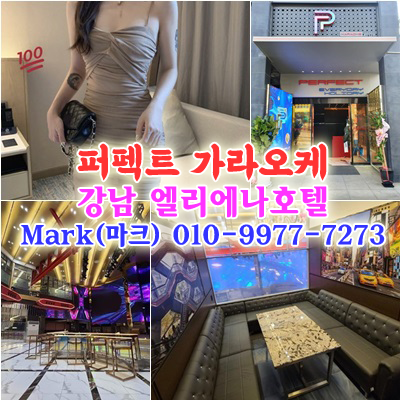Five Reasons Why You Can’t Non-Stimulant ADHD Medication Options Without Social Media
작성자 정보
- Cassandra Dumar… 메일보내기 이름으로 검색 작성
- 작성일
컨텐츠 정보
- 13 조회
-
목록
본문
What are the best non-stimulant ADHD medications? This article will discuss Venlafaxine (clonidine), Guanfacine (monoamine oxide inhibitors) and Clonidine (clonidine). Each of these options has negative side effects, and every one could be different. Check out the adverse effects of each before deciding which one is right for you. This article might be useful to you. Before taking any medication for adhd uk, make sure you ask your doctor about the risks and side effects.
Venlafaxine
Children with ADHD might benefit from the treatment with non-stimulant medicines such as venlafaxine which contains an enantiomer that inhibits the release of dopamine. Due to its slow pharmacokinetics, it can be taken prior to bedtime, ensuring that the medication is effective throughout the day. Despite its frequent use off-label in the U.S., the safety of this treatment is still unclear. FDA has denied provisional approval to Dasotraline because of its low therapeutic index. Other SNDRIs are in phase 3 trials.
Some doctors prefer non-stimulant medications in lieu of stimulants for ADHD treatment. They are effective as a second-line treatment for ADHD especially for those who have trouble responding to stimulants. The choice of medication will be based on the child's needs as well as a physician's preference. Venlafaxine is an unstimulant adhd medication list medication, has a number of advantages over stimulant drugs.
The drug was tested in a placebo controlled trial in children. The dosage was 10 mg divided over 3 days, and seven out of ten children received it in addition to other psychiatric medicines. It was effective in reducing ADHD symptoms in children while not creating any serious side negative effects. It is also used in combination with methylphenidate. However it is necessary to conduct more research. However, it's yet to be determined if venlafaxine is effective.
It is possible that it could have adverse effects on your performance during exercise just like other medication. While stimulant ADHD medications increase the amount of muscle activity and decrease fatigue, the drug can increase the risk of cardiac events. It's also a risk factor for abuse and many athletes use them in inappropriate ways. It is essential to understand how to get adhd medication uk each drug works and how it affects the athlete's body. Not taking these medications properly could cause adverse side effects.
While ADHD medications can be beneficial for many children, it is important to think about the appropriate diagnosis and coexisting conditions prior to deciding which one is best for your child. Be aware that the internet cannot be used to replace proper medical care. Before starting any new medication, consult an expert licensed. If you think your child may have a medical condition, a visit with a pediatrician is recommended.
Clonidine
While stimulants constitute the majority of ADHD medication, Clonidine, a non-stimulant Clonidine is an option. This medication belongs to the class of drugs known as hypotensive drugs that act centrally. It helps in reducing symptoms like hyperactivity or inattention, as well as impulsivity. Children are typically prescribed a small dose Clonidine, typically 0.05 to 0.01 mg daily. A special extended-release formula of Clonidine is approved for use with children aged 6-17 years old. aged.
Non-stimulant ADHD medications can be beneficial for a variety of adults and teens. These medications are less harmful than stimulants, as they are not abused. Alpha agonists are among the most popular non-stimulant medications, while norepinephrine moders is the second. These medications are effective for treating ADHD symptoms, but may be a risk for those with certain health conditions.
Clonidine is an additional type of ADHD medication that can be used to boost the effectiveness of other ADHD medications. Clonidine can enhance the effects of stimulants when used with it. It can also lower blood pressure as a side effect. Many people struggle to remember to take their medication, and they may benefit from using Clonidine. The downside of using Clonidine is that it can have side effects.
Clonidine is not the best treatment for ADHD. However it can be a very effective treatment for certain individuals. It can work in conjunction with other medications to help treat certain symptoms, like hyperactivity, impulsivity or aggression, How to get Adhd medication uk as well as inattention. Clonidine is a non-stimulant , and does not have the addictive qualities of traditional stimulants. It's not as dependent as stimulants, therefore it might be a better option for certain individuals.
One study investigated the safety and efficacy of Clonidine for managing adhd without medication in children. The drug was well tolerated when given in divided doses. The most commonly reported side effects were insomnia, fatigue and bradycardia. However electrocardiographic changes were unimportant. Clonidine is not recommended for use in combination with ADHD medication.
Guanfacine
A new non-stimulant medication for ADHD is Guanfacine, an extended-release formula that is approved for use in children between six and 17 years old. It enhances brain activity by selectively interfacing with the A2A receptor. The medication is largely ineffective for children younger than 12 years of age However, higher doses are typically needed to sustain the benefits. Guanfacine, even though it's not a psychostimulant medication is comparable to other non-stimulant medications such as atomoxatine, or Clonidine.
The study's authors found out that guanfacine has comparable effects as dextroamphetamine when it comes to improving ADHD symptoms. To determine if guanfacine is a good treatment for ADHD researchers looked through PubMed for published studies that compare the effects of guanfacine to dextroamphetamine. It was also determined that guanfacine showed a similar effect to dextroamphetamine when it came to reducing disruptive behavior in children.
The non-stimulant medication for ADHD aren't as fast in their effects as stimulants. Some suffer from side negative effects, and it may take several weeks for them to begin working. Non-stimulants can be an excellent option for teens suffering from substance abuse problems. Although they may take longer to create an effect, they aren't addictive and don't develop into an addiction.
Before starting any new medication, you should consult with your physician. This medication can interact with other medications, so be sure to consult your physician. Alcohol and depressants can increase the negative effects of guanfacine. Guanfacine can interact with antidepressant and antihypertensive drugs. This could result in fainting, or low blood pressure.
Guanfacine's effects on ADHD are promising. Thirteen ADHD patients aged between four and 20 years were randomly assigned to receive guanfacine in an open-label study. The participants were compared with their counterparts in the control group. Guanfacine has not been shown to be a cure for ADHD, despite its promising results. It's too early for us to know if this medication can be effective for children.
Monoamine oxidase inhibitors
Monoamine oxidase inhibitors are non-stimulant ADHD medications. However, they can cause adverse effects and interact with other medications. While they are a great alternative to treat ADHD however, monoamine inhibitors of oxidase should not be the first option for treating this condition. This medicine is a powerful antidepressant. It may have side effects that are not acceptable for all children.
It isn't known what neurobiological pathways are behind the action of monoamine oxidase inhibitors in ADHD patients. It is well-known that electronic cigarettes and nicotine contain significant amounts of monoamine oxidase inhibitors. These agents may alter the functioning of serotonergic system and the neurotransmitters norepinephrine as well as dopamine.
Monoamine oxidase inhibitors are non-stimulant drug that can be used to treat ADHD. However they are frequently combined with other medications to treat anxiety and depression. Some doctors may prescribe an antidepressant with monoamine oxidase inhibitors to treat depression but they shouldn't be used with them. Therefore, they should be stopped at least 14 days prior to starting stimulant medication.
Monoamine oxide inhibitors are a non-stimulant medications for best adhd medication for adults ADHD. However, many people aren't responding well to these medications. ADHD can be treated with many other medications that can help your child manage the behavioral issues. A qualified therapist can help you tackle these issues. Regain, Betterhelp and Talkspace are great options for anyone looking for therapy online.
Atomoxetine (or Strattera) is a type ADHD medication that acts as a norepinephrine receptor inhibitor. This drug is non-stimulant and can be used to treat ADHD in children and adults. Although it is regarded as an alternative to third-line treatment, approximately half of patients find it to be efficient. It takes some time for the drug's effects to kick in. The side effects include nausea, vomiting, dizziness, and dizziness.
Monoamine oxidase inhibitions are a non-stimulant drug that treats adhd medication uk. One of the side effects is drowsiness. The drugs can also decrease blood pressure and heart rate. Therefore, it is crucial to monitor blood pressure levels and heart rate carefully. In addition, non-stimulant medication for ADHD can cause irregular heartbeats. After a 12-month follow-up the blood pressure of Mr. A was steady. In this time period the systolic blood pressure varied from 98 mmHg to 132 millimeters. Diastolic blood pressure was between 60 and 70.
Venlafaxine
Children with ADHD might benefit from the treatment with non-stimulant medicines such as venlafaxine which contains an enantiomer that inhibits the release of dopamine. Due to its slow pharmacokinetics, it can be taken prior to bedtime, ensuring that the medication is effective throughout the day. Despite its frequent use off-label in the U.S., the safety of this treatment is still unclear. FDA has denied provisional approval to Dasotraline because of its low therapeutic index. Other SNDRIs are in phase 3 trials.
Some doctors prefer non-stimulant medications in lieu of stimulants for ADHD treatment. They are effective as a second-line treatment for ADHD especially for those who have trouble responding to stimulants. The choice of medication will be based on the child's needs as well as a physician's preference. Venlafaxine is an unstimulant adhd medication list medication, has a number of advantages over stimulant drugs.
The drug was tested in a placebo controlled trial in children. The dosage was 10 mg divided over 3 days, and seven out of ten children received it in addition to other psychiatric medicines. It was effective in reducing ADHD symptoms in children while not creating any serious side negative effects. It is also used in combination with methylphenidate. However it is necessary to conduct more research. However, it's yet to be determined if venlafaxine is effective.
It is possible that it could have adverse effects on your performance during exercise just like other medication. While stimulant ADHD medications increase the amount of muscle activity and decrease fatigue, the drug can increase the risk of cardiac events. It's also a risk factor for abuse and many athletes use them in inappropriate ways. It is essential to understand how to get adhd medication uk each drug works and how it affects the athlete's body. Not taking these medications properly could cause adverse side effects.
While ADHD medications can be beneficial for many children, it is important to think about the appropriate diagnosis and coexisting conditions prior to deciding which one is best for your child. Be aware that the internet cannot be used to replace proper medical care. Before starting any new medication, consult an expert licensed. If you think your child may have a medical condition, a visit with a pediatrician is recommended.
Clonidine
While stimulants constitute the majority of ADHD medication, Clonidine, a non-stimulant Clonidine is an option. This medication belongs to the class of drugs known as hypotensive drugs that act centrally. It helps in reducing symptoms like hyperactivity or inattention, as well as impulsivity. Children are typically prescribed a small dose Clonidine, typically 0.05 to 0.01 mg daily. A special extended-release formula of Clonidine is approved for use with children aged 6-17 years old. aged.
Non-stimulant ADHD medications can be beneficial for a variety of adults and teens. These medications are less harmful than stimulants, as they are not abused. Alpha agonists are among the most popular non-stimulant medications, while norepinephrine moders is the second. These medications are effective for treating ADHD symptoms, but may be a risk for those with certain health conditions.
Clonidine is an additional type of ADHD medication that can be used to boost the effectiveness of other ADHD medications. Clonidine can enhance the effects of stimulants when used with it. It can also lower blood pressure as a side effect. Many people struggle to remember to take their medication, and they may benefit from using Clonidine. The downside of using Clonidine is that it can have side effects.
Clonidine is not the best treatment for ADHD. However it can be a very effective treatment for certain individuals. It can work in conjunction with other medications to help treat certain symptoms, like hyperactivity, impulsivity or aggression, How to get Adhd medication uk as well as inattention. Clonidine is a non-stimulant , and does not have the addictive qualities of traditional stimulants. It's not as dependent as stimulants, therefore it might be a better option for certain individuals.
One study investigated the safety and efficacy of Clonidine for managing adhd without medication in children. The drug was well tolerated when given in divided doses. The most commonly reported side effects were insomnia, fatigue and bradycardia. However electrocardiographic changes were unimportant. Clonidine is not recommended for use in combination with ADHD medication.
Guanfacine
A new non-stimulant medication for ADHD is Guanfacine, an extended-release formula that is approved for use in children between six and 17 years old. It enhances brain activity by selectively interfacing with the A2A receptor. The medication is largely ineffective for children younger than 12 years of age However, higher doses are typically needed to sustain the benefits. Guanfacine, even though it's not a psychostimulant medication is comparable to other non-stimulant medications such as atomoxatine, or Clonidine.
The study's authors found out that guanfacine has comparable effects as dextroamphetamine when it comes to improving ADHD symptoms. To determine if guanfacine is a good treatment for ADHD researchers looked through PubMed for published studies that compare the effects of guanfacine to dextroamphetamine. It was also determined that guanfacine showed a similar effect to dextroamphetamine when it came to reducing disruptive behavior in children.
The non-stimulant medication for ADHD aren't as fast in their effects as stimulants. Some suffer from side negative effects, and it may take several weeks for them to begin working. Non-stimulants can be an excellent option for teens suffering from substance abuse problems. Although they may take longer to create an effect, they aren't addictive and don't develop into an addiction.
Before starting any new medication, you should consult with your physician. This medication can interact with other medications, so be sure to consult your physician. Alcohol and depressants can increase the negative effects of guanfacine. Guanfacine can interact with antidepressant and antihypertensive drugs. This could result in fainting, or low blood pressure.
Guanfacine's effects on ADHD are promising. Thirteen ADHD patients aged between four and 20 years were randomly assigned to receive guanfacine in an open-label study. The participants were compared with their counterparts in the control group. Guanfacine has not been shown to be a cure for ADHD, despite its promising results. It's too early for us to know if this medication can be effective for children.
Monoamine oxidase inhibitors
Monoamine oxidase inhibitors are non-stimulant ADHD medications. However, they can cause adverse effects and interact with other medications. While they are a great alternative to treat ADHD however, monoamine inhibitors of oxidase should not be the first option for treating this condition. This medicine is a powerful antidepressant. It may have side effects that are not acceptable for all children.
It isn't known what neurobiological pathways are behind the action of monoamine oxidase inhibitors in ADHD patients. It is well-known that electronic cigarettes and nicotine contain significant amounts of monoamine oxidase inhibitors. These agents may alter the functioning of serotonergic system and the neurotransmitters norepinephrine as well as dopamine.
Monoamine oxidase inhibitors are non-stimulant drug that can be used to treat ADHD. However they are frequently combined with other medications to treat anxiety and depression. Some doctors may prescribe an antidepressant with monoamine oxidase inhibitors to treat depression but they shouldn't be used with them. Therefore, they should be stopped at least 14 days prior to starting stimulant medication.
Monoamine oxide inhibitors are a non-stimulant medications for best adhd medication for adults ADHD. However, many people aren't responding well to these medications. ADHD can be treated with many other medications that can help your child manage the behavioral issues. A qualified therapist can help you tackle these issues. Regain, Betterhelp and Talkspace are great options for anyone looking for therapy online.
Atomoxetine (or Strattera) is a type ADHD medication that acts as a norepinephrine receptor inhibitor. This drug is non-stimulant and can be used to treat ADHD in children and adults. Although it is regarded as an alternative to third-line treatment, approximately half of patients find it to be efficient. It takes some time for the drug's effects to kick in. The side effects include nausea, vomiting, dizziness, and dizziness.
Monoamine oxidase inhibitions are a non-stimulant drug that treats adhd medication uk. One of the side effects is drowsiness. The drugs can also decrease blood pressure and heart rate. Therefore, it is crucial to monitor blood pressure levels and heart rate carefully. In addition, non-stimulant medication for ADHD can cause irregular heartbeats. After a 12-month follow-up the blood pressure of Mr. A was steady. In this time period the systolic blood pressure varied from 98 mmHg to 132 millimeters. Diastolic blood pressure was between 60 and 70.
관련자료
-
이전
-
다음
댓글 0
등록된 댓글이 없습니다.












